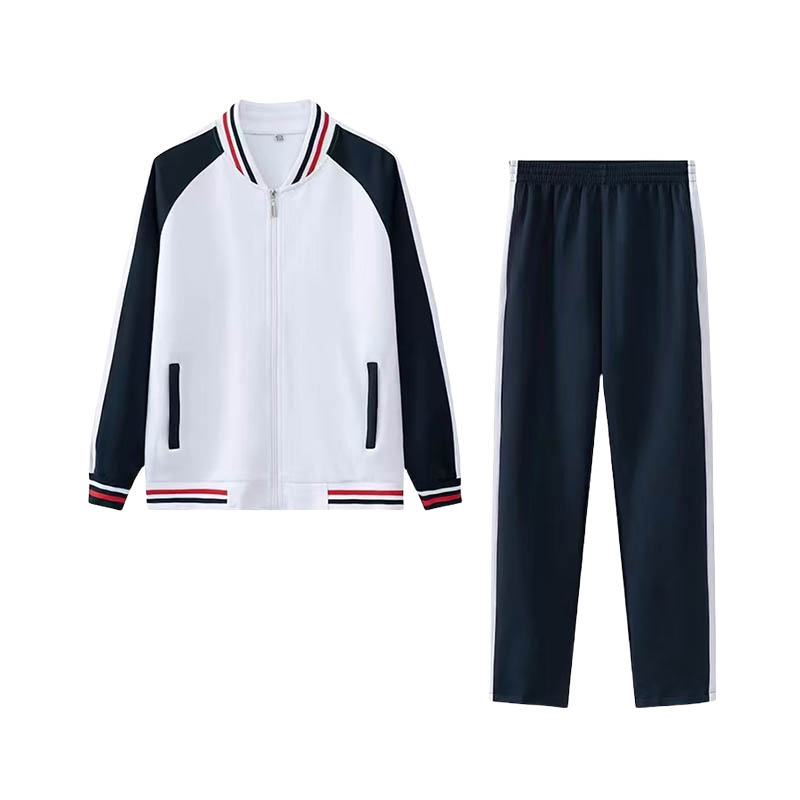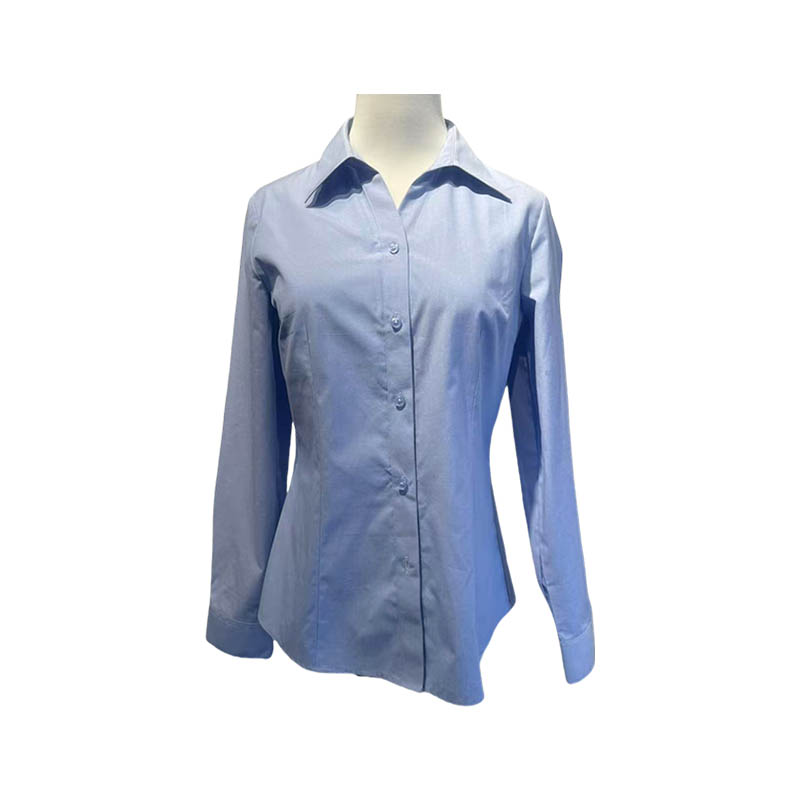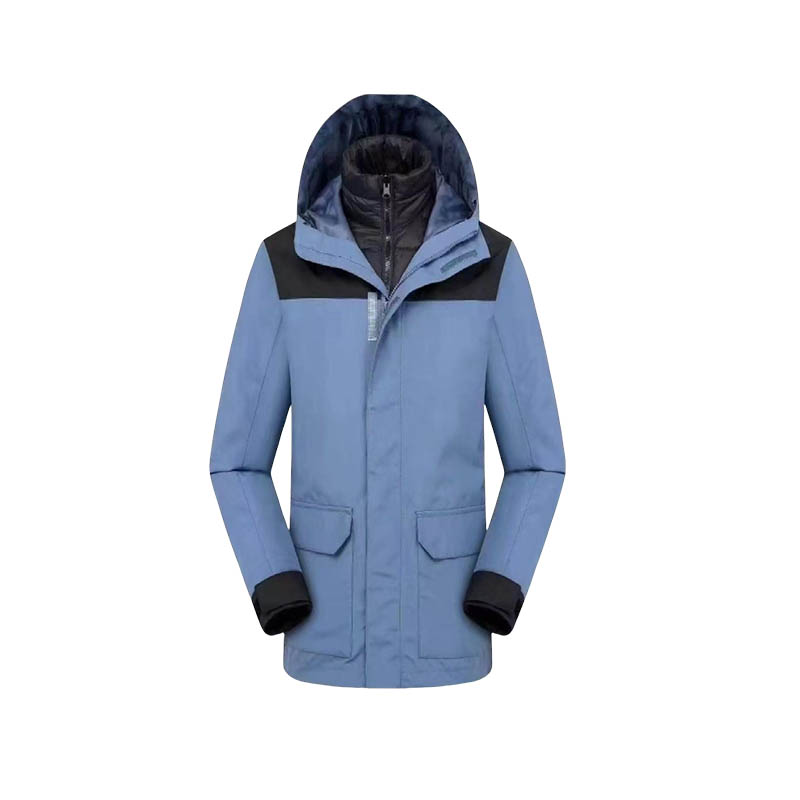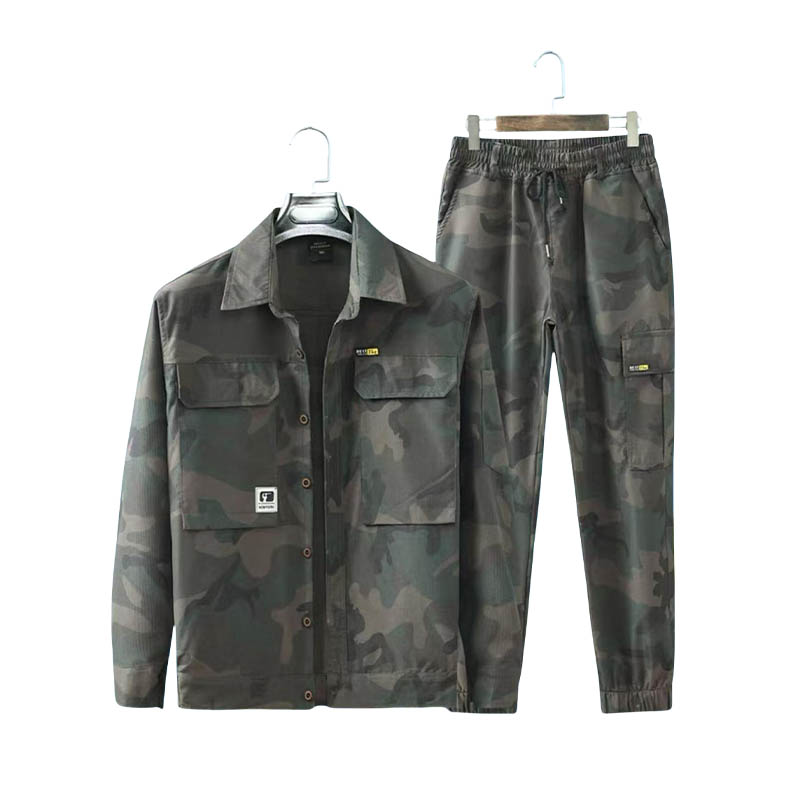How can labor protection clothing improve wearing comfort?
Release Time : 2025-09-22
Many people often associate labor protection clothing with words like "heavy," "stuffy," and "unbreathable." Especially in high-temperature, high-intensity work environments, many workers complain about the discomfort of protective clothing and even refuse to wear it properly, posing a safety hazard. However, with continuous advances in materials science, ergonomics, and manufacturing technology, modern labor protection clothing has transcended traditional constraints and is transforming from "passive protection" to "active comfort."
1. Lightweight Design: Reducing the Burden Without Compromising Protection
In the past, to ensure adequate protection, many protective clothing garments used heavy materials, which increased the wearer's burden and caused fatigue after prolonged work. Today, by utilizing new high-strength, low-density synthetic fibers, protective clothing has significantly reduced weight while maintaining tear resistance, cut resistance, and flame retardancy. For example, the new generation of cut-resistant gloves and chemical protective suits are over 30% lighter than traditional products, significantly improving flexibility and work efficiency.
2. Breathability and Moisture-Wearing: Say Goodbye to the "Sauna" Experience
Stuffiness is a common complaint workers have about protective clothing. To address this, modern protective clothing widely utilizes breathable membrane technology and mesh structures. These effectively block harmful substances while allowing water vapor to pass through, achieving a "water-resistant, sweat-free" design. Furthermore, breathable mesh panels are added to sweat-prone areas such as the underarms, back, and shoulders to enhance air circulation and effectively reduce perceived temperature. Furthermore, moisture-wicking linings significantly enhance comfort. These fabrics quickly draw sweat away from the skin's surface for evaporation, keeping the body dry and reducing discomfort and skin problems caused by moisture.
3. Ergonomic Cut: Fits the Body for Free Movement
Traditional protective clothing often features a boxy design, which is loose and unfitting, hindering flexibility. Modern protective clothing incorporates three-dimensional cutting and multi-panel construction, optimized for human movement. For example, pre-bent elbows and knees, elastic shoulder panels, and an adjustable waistband ensure workers are unrestricted during bending, climbing, and reaching, creating a natural, integrated movement experience.
4. Intelligent Temperature Control and Environmental Adaptability
In extreme temperature environments, thermal management capabilities are crucial for protective clothing. Some high-end protective clothing incorporates phase change materials, which absorb heat when temperatures rise and release it when temperatures drop, achieving localized temperature regulation. Furthermore, cold-weather clothing designed for cold environments incorporates lightweight, highly effective insulation to ensure warmth without bulk. In hot regions, some companies are promoting "cooling vests" or external ventilation systems, which use fans or ice packs to assist with cooling, further enhancing comfort during high-temperature work.
5. Environmentally Friendly and Skin-Friendly Materials: Focusing on Long-Term Health
Long-term wear of protective clothing can cause skin allergies or irritation. To address this, an increasing number of brands are opting for environmentally friendly fabrics that are free of fluorescent agents, hypoallergenic, and biodegradable, ensuring that the clothing is both human- and environmentally friendly. The inner fabric is generally treated with a soft, skin-friendly finish to reduce friction and enhance next-to-skin comfort.
6. Modularity and Personalization: Meeting Diverse Needs
Different types of work, body types, and climates require different protective clothing. Modern protective clothing tends to adopt modular designs, such as removable liners, adjustable cuffs, and multiple pocket layouts, allowing for flexible adjustments based on specific needs. Furthermore, a variety of sizes and fits are available, even supporting customization services, enhancing individual fit.
Improving the wearing comfort of labor protection clothing is not only a reflection of technological advancement, but also a respect for the dignity and health of workers. When safety and comfort are no longer mutually exclusive, workers will naturally be more willing to proactively and properly wear protective equipment, truly achieving a shift from "I need to be safe" to "I want to be safe."
1. Lightweight Design: Reducing the Burden Without Compromising Protection
In the past, to ensure adequate protection, many protective clothing garments used heavy materials, which increased the wearer's burden and caused fatigue after prolonged work. Today, by utilizing new high-strength, low-density synthetic fibers, protective clothing has significantly reduced weight while maintaining tear resistance, cut resistance, and flame retardancy. For example, the new generation of cut-resistant gloves and chemical protective suits are over 30% lighter than traditional products, significantly improving flexibility and work efficiency.
2. Breathability and Moisture-Wearing: Say Goodbye to the "Sauna" Experience
Stuffiness is a common complaint workers have about protective clothing. To address this, modern protective clothing widely utilizes breathable membrane technology and mesh structures. These effectively block harmful substances while allowing water vapor to pass through, achieving a "water-resistant, sweat-free" design. Furthermore, breathable mesh panels are added to sweat-prone areas such as the underarms, back, and shoulders to enhance air circulation and effectively reduce perceived temperature. Furthermore, moisture-wicking linings significantly enhance comfort. These fabrics quickly draw sweat away from the skin's surface for evaporation, keeping the body dry and reducing discomfort and skin problems caused by moisture.
3. Ergonomic Cut: Fits the Body for Free Movement
Traditional protective clothing often features a boxy design, which is loose and unfitting, hindering flexibility. Modern protective clothing incorporates three-dimensional cutting and multi-panel construction, optimized for human movement. For example, pre-bent elbows and knees, elastic shoulder panels, and an adjustable waistband ensure workers are unrestricted during bending, climbing, and reaching, creating a natural, integrated movement experience.
4. Intelligent Temperature Control and Environmental Adaptability
In extreme temperature environments, thermal management capabilities are crucial for protective clothing. Some high-end protective clothing incorporates phase change materials, which absorb heat when temperatures rise and release it when temperatures drop, achieving localized temperature regulation. Furthermore, cold-weather clothing designed for cold environments incorporates lightweight, highly effective insulation to ensure warmth without bulk. In hot regions, some companies are promoting "cooling vests" or external ventilation systems, which use fans or ice packs to assist with cooling, further enhancing comfort during high-temperature work.
5. Environmentally Friendly and Skin-Friendly Materials: Focusing on Long-Term Health
Long-term wear of protective clothing can cause skin allergies or irritation. To address this, an increasing number of brands are opting for environmentally friendly fabrics that are free of fluorescent agents, hypoallergenic, and biodegradable, ensuring that the clothing is both human- and environmentally friendly. The inner fabric is generally treated with a soft, skin-friendly finish to reduce friction and enhance next-to-skin comfort.
6. Modularity and Personalization: Meeting Diverse Needs
Different types of work, body types, and climates require different protective clothing. Modern protective clothing tends to adopt modular designs, such as removable liners, adjustable cuffs, and multiple pocket layouts, allowing for flexible adjustments based on specific needs. Furthermore, a variety of sizes and fits are available, even supporting customization services, enhancing individual fit.
Improving the wearing comfort of labor protection clothing is not only a reflection of technological advancement, but also a respect for the dignity and health of workers. When safety and comfort are no longer mutually exclusive, workers will naturally be more willing to proactively and properly wear protective equipment, truly achieving a shift from "I need to be safe" to "I want to be safe."







